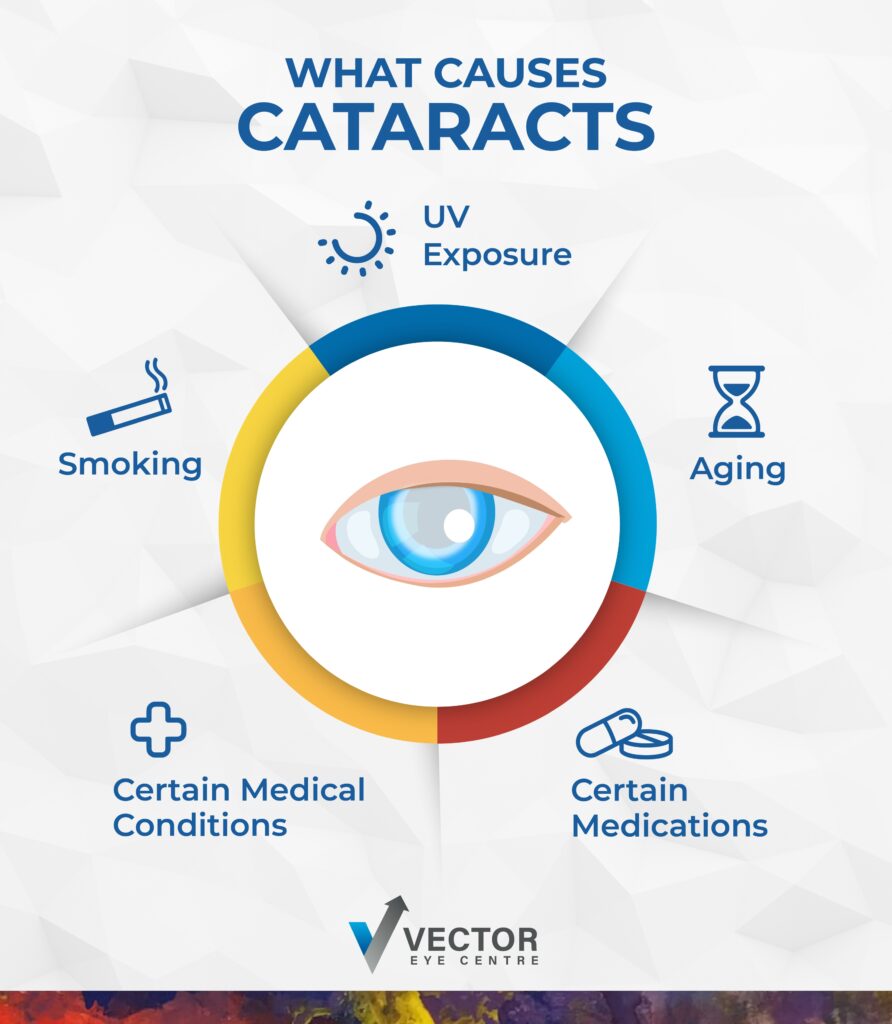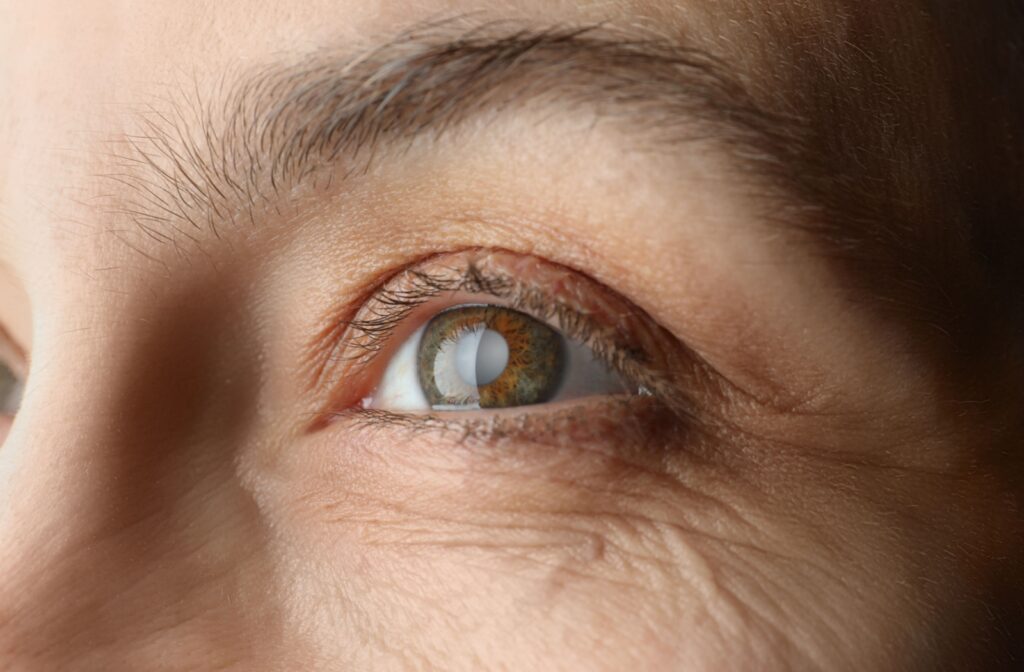The onset of cataracts, a common condition among older adults that impacts vision, can be frustrating and isolating. For many people, the solution can be cataract surgery, a reliable technique that has transformed blurred vision into greater clarity.
If you’re considering cataract surgery, you’re probably wondering if it can be performed on both eyes simultaneously to save you from multiple visits to your eye doctor. For optimal recovery, cataract surgery should be completed in each eye separately, usually 3-4 weeks apart.
When you visit us at Vector Eye Centre, we’ll answer all your questions about what cataract surgery is and why it should be spaced apart. Our goal is to help you have confidence in your cataract surgery timeline.
What Are Cataracts?
The lens in our eyes works like a camera, focusing the light that passes through to help produce clear, sharp images on the retina. Over time, this lens can become clouded, causing vision to blur, colours to dull, and night vision to decline. This condition is called a cataract—or cataracts when it occurs in both eyes.
Cataracts are a common condition and are primarily age-related. Your risk of developing them can increase due to genetic factors, sun exposure, and injuries to the eye.

What Is Cataract Surgery?
Cataract surgery is a procedure that involves removing the cloudy natural lens in your eye and replacing it with an artificial lens, known as an intraocular lens (IOL). It’s a low-risk procedure and one of the most common procedures in Canada.
How Long Between the Surgeries on Each Eye?
The period between cataract surgeries on each eye helps allow for the first eye to heal fully, avoid any later onset acute complications, and for your vision to stabilize before your surgeon moves on to the second eye. Your surgeon wants to ensure the specific visual and refractive target is achieved in the first eye, before carrying out the second eye’s surgery. The process often involves fixing the eye with the worst cataract first to maximize the improvement in your vision. At Vector Eye Centre, we generally recommend at least a 3 – 4 week gap between cataract surgery on each eye.
The period between surgeries can vary from a few weeks to even months, depending on:
- Your surgeon’s recommendations
- The severity of your cataracts of one eye vs the other
- Your overall health
- The Type of IOL
- The difference in your glasses prescription of one eye vs. the other
Why Aren’t Cataract Surgeries Done Simultaneously?
The primary reason is patient safety. For safety and recovery reasons, doctors prefer to perform cataract surgeries in 2 separate sessions, especially in cases where a person has health issues that may increase the risks of surgery or when someone has a particularly dense cataract.
Performing surgery on one eye at a time also helps provide time for us to confirm that the surgery has helped improve your vision, the refractive target is achieved with the selected IOL, and to monitor your comfort before proceeding with the second eye, helping ensure that any necessary adjustments can be made before the subsequent surgery.
Is Cataract Surgery Painful?
No, cataract surgery should not be painful. Patients are awake during the procedure, but numbing eye drops are administered to the eye being operated on, and most patients report little to no discomfort during the procedure. Some patients prefer mild sedation to help keep them comfortable during the surgery. The procedure usually takes 10 minutes or less.
What can be different about the second eye surgery, however, is your knowledge of the procedure since you’ve already had one. Some people feel less anxious before their second procedure, while others may feel more stressed.

How Long Do I Wear Dark Glasses After Cataract Surgery?
After cataract surgery, we may recommend you wear dark sunglasses for about 2 weeks. These sunglasses help protect your eyes from bright lights and UV rays that can affect healing, but more importantly prevent you from rubbing your eyes and protect from dust particles in the air.
Sunglasses are just one crucial part of post-operative care. After your procedure, we’ll provide guidance on the best practices and habits for a safe recovery, and we may provide specific instructions for you to follow depending on your personal health.
Will Vision Be Corrected with Cataract Surgery?
In many cases, your vision will progressively improve within a few days of each procedure. It is essential to follow the post-operative instructions given by your ophthalmologist to help your eyes recover safely and reach optimal results for your vision.
Your vision may be blurry as your eyes adjust to the new lens, but this should be temporary. After both surgeries, your vision should be improved.
How Vector Eye Centre Can Help
We offer several options for IOLs that can restore clear vision and enhance your quality of life through cataract surgery. When you visit us, we’ll determine an appropriate schedule for your surgery based on your health and vision needs.
At Vector Eye Centre, each step, from consultation to post-operative care, is carefully considered to address your unique needs and circumstances. Contact us today to discuss your vision with our team. We’re ready to meet your needs.



